jmeter除了可以做http测试,还支持tcp长连接
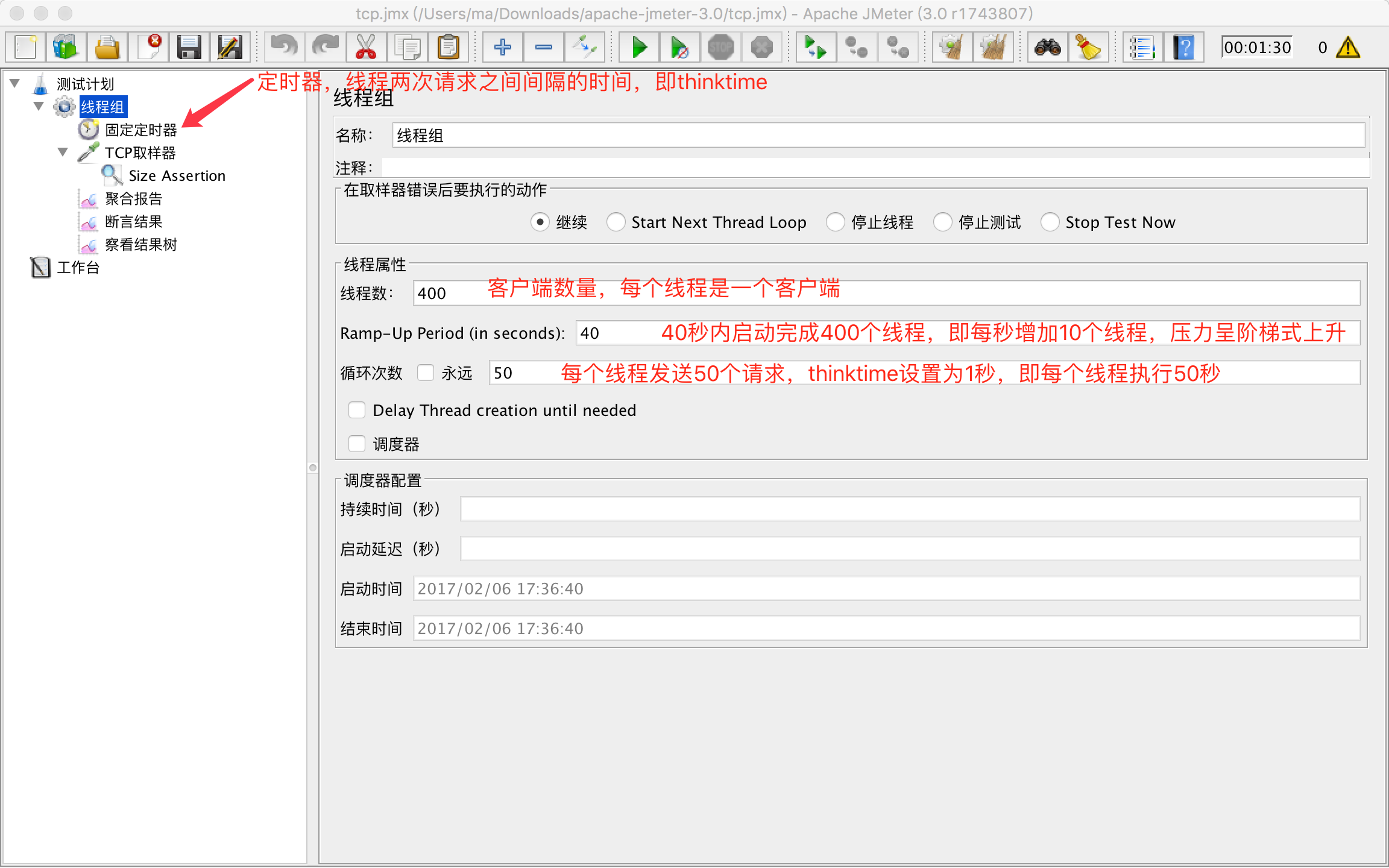
图中的Ramp-Up Period需要注意,它表示启动所有线程花费的时间,如图所示,设置为40秒,jmeter会自动计算每秒应该启动多少个线程。
设置thinktime,即每个客户端两次请求之间的时间间隔 
发送tcp请求,注意End of line,如果不设置,jmeter会一直读取流,最后认为请求失败,response code 500,所有的结果都会被标记为错误。10是byte值,代表换行,即 \n 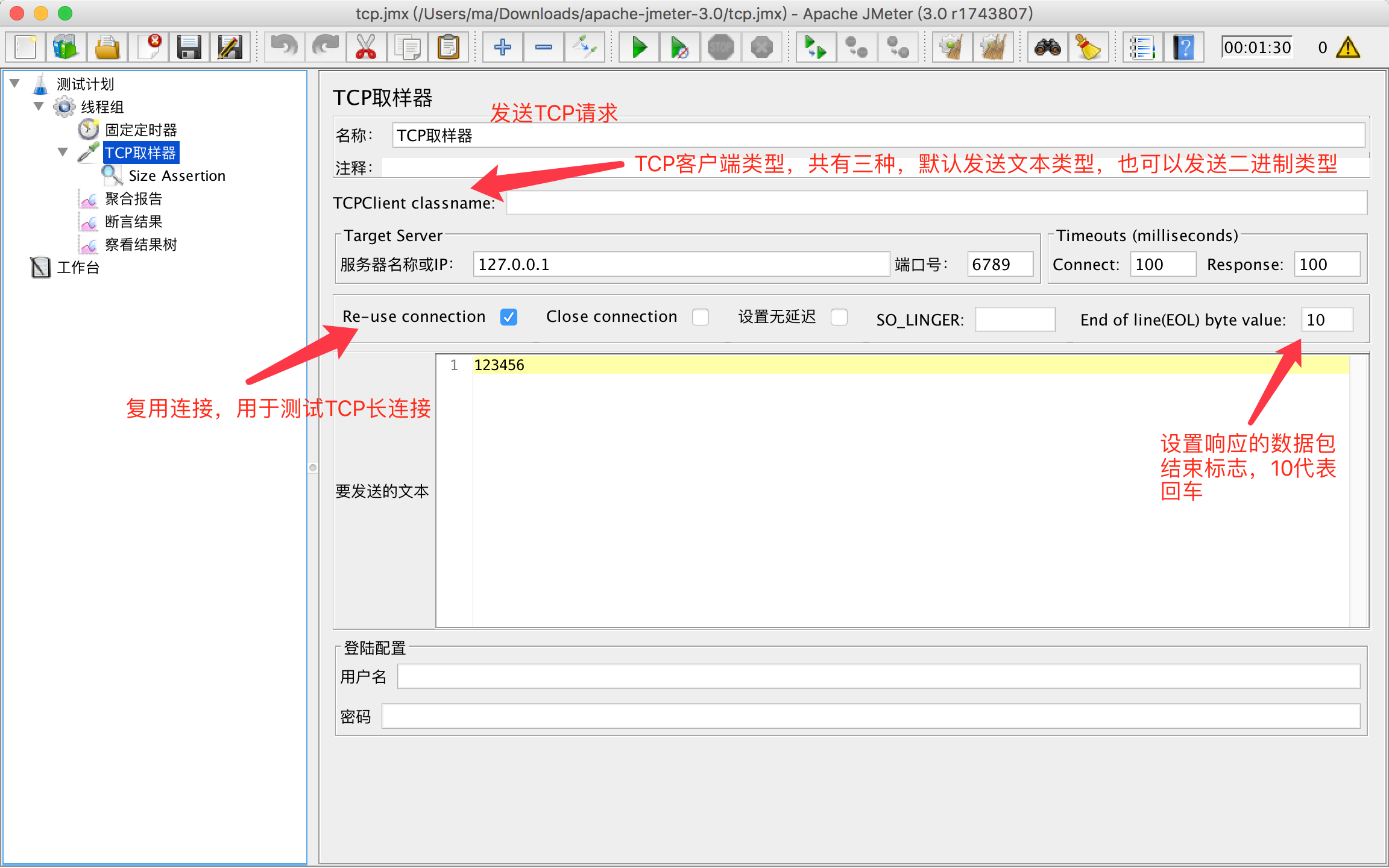
自定义响应是否正确,比较字节数会高效一些 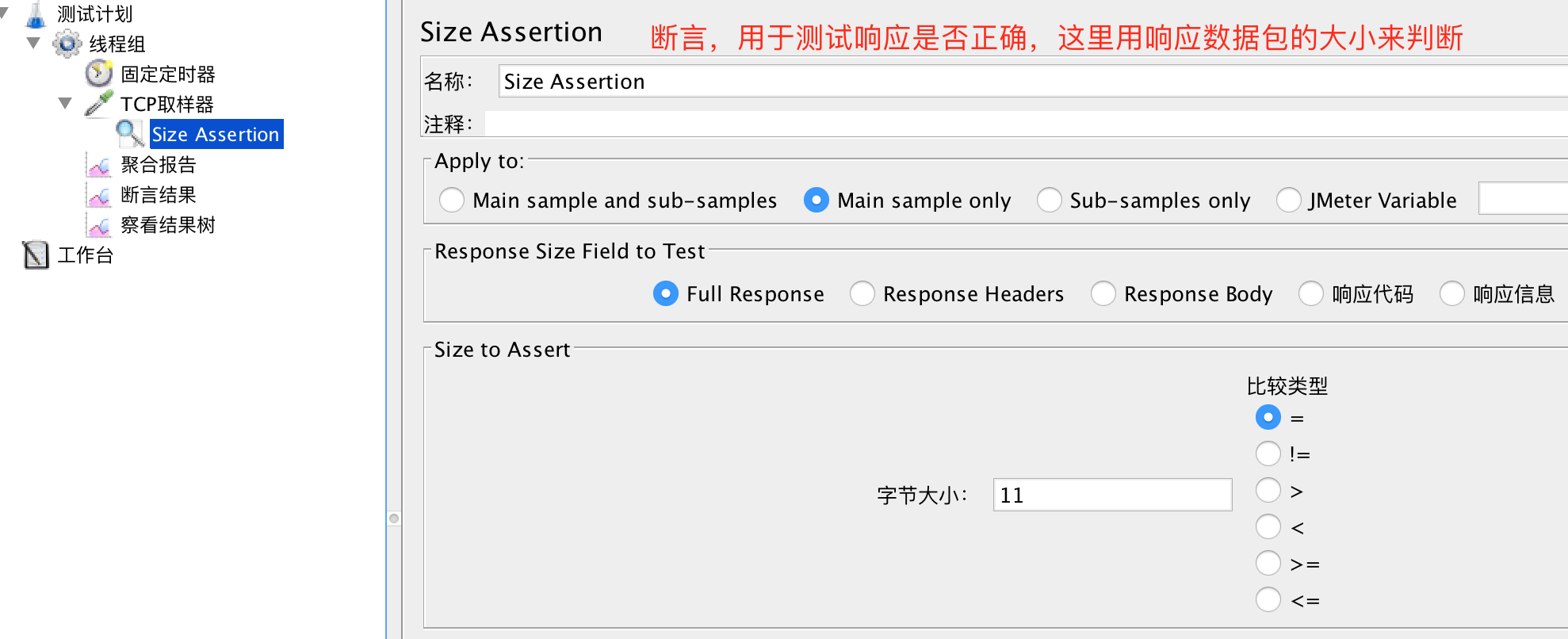
显示每个断言的结果,如果断言为false,会显示错误原因,一般用于debug 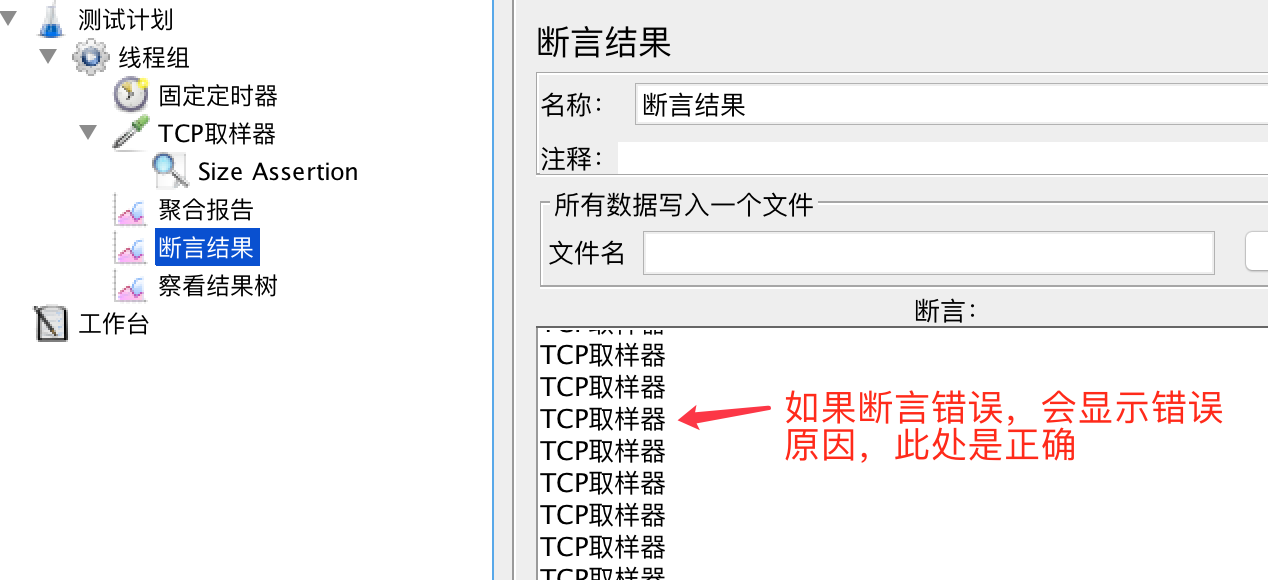
显示所有请求记录,可以查看响应,便于排查错误 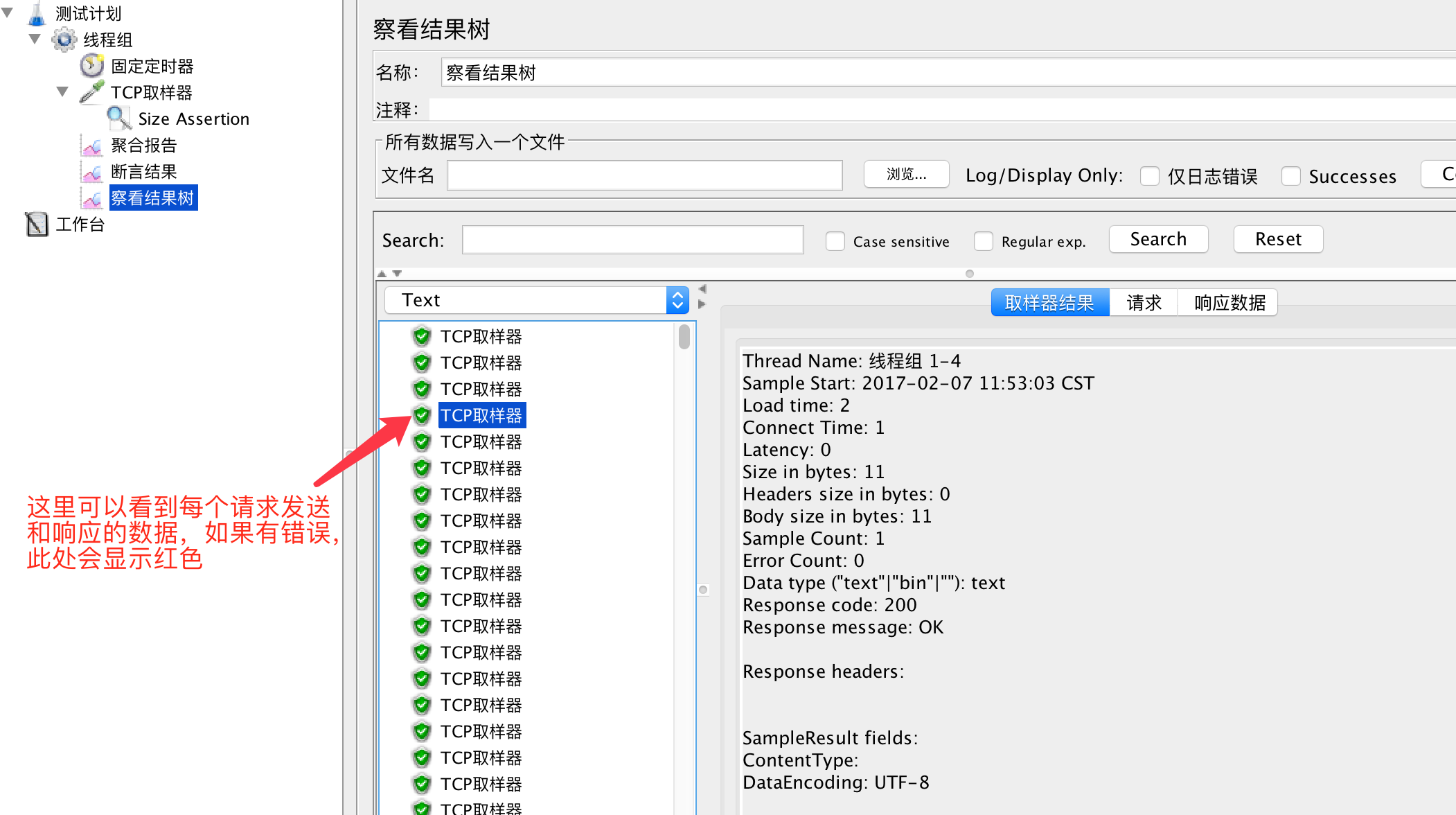
最后是测试报告
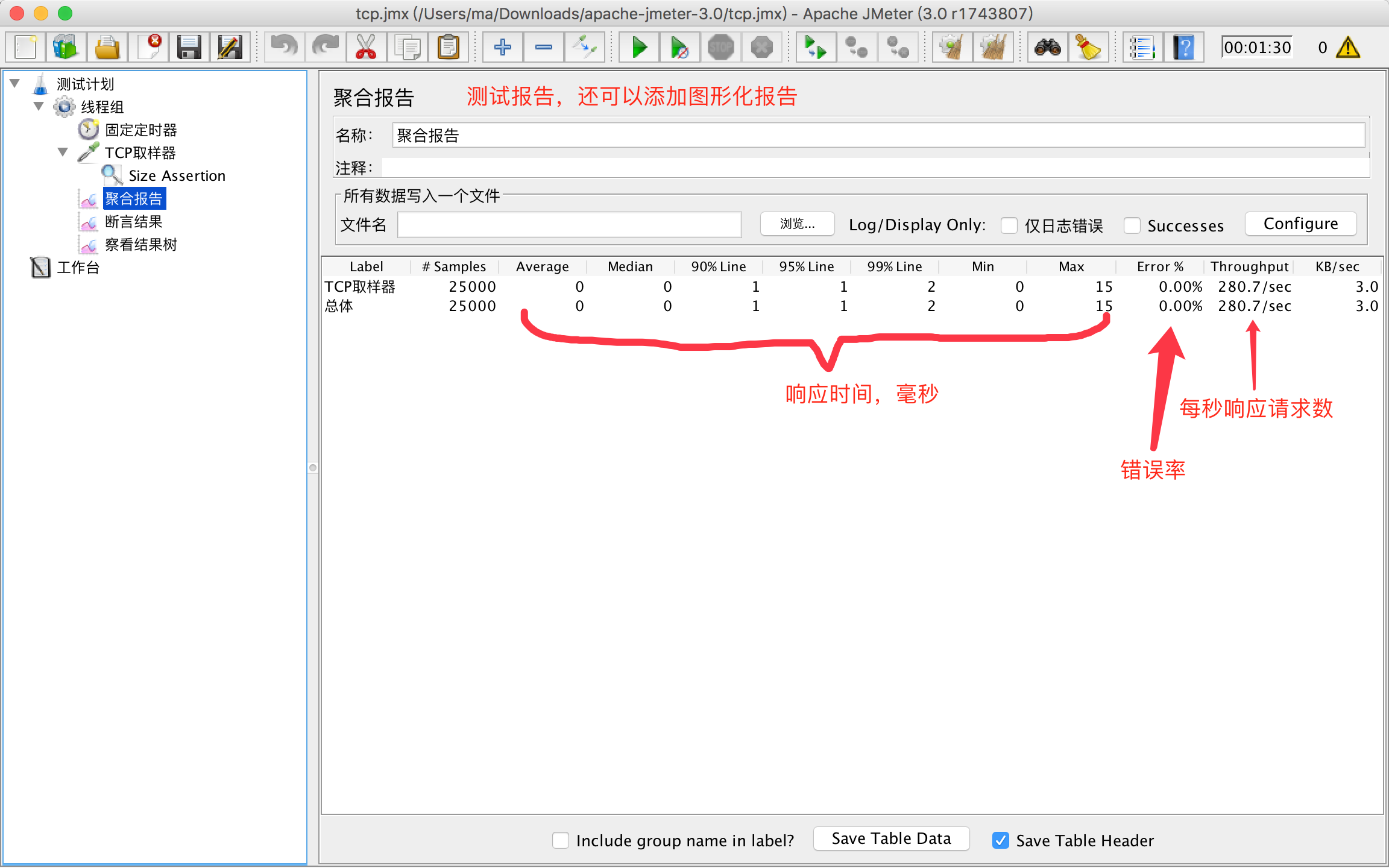
/*
* Licensed to the Apache Software Foundation (ASF) under one or more
* contributor license agreements. See the NOTICE file distributed with
* this work for additional information regarding copyright ownership.
* The ASF licenses this file to You under the Apache License, Version 2.0
* (the "License"); you may not use this file except in compliance with
* the License. You may obtain a copy of the License at
*
* http://www.apache.org/licenses/LICENSE-2.0
*
* Unless required by applicable law or agreed to in writing, software
* distributed under the License is distributed on an "AS IS" BASIS,
* WITHOUT WARRANTIES OR CONDITIONS OF ANY KIND, either express or implied.
* See the License for the specific language governing permissions and
* limitations under the License.
*
*/
/*
* TCP Sampler Client implementation which reads and writes binary data.
*
* Input/Output strings are passed as hex-encoded binary strings.
*
*/
package org.apache.jmeter.protocol.tcp.sampler;
import java.io.ByteArrayOutputStream;
import java.io.IOException;
import java.io.InputStream;
import java.io.InterruptedIOException;
import java.io.OutputStream;
import java.net.SocketTimeoutException;
import org.apache.commons.io.IOUtils;
import org.apache.jmeter.util.JMeterUtils;
import org.apache.jorphan.logging.LoggingManager;
import org.apache.jorphan.util.JOrphanUtils;
import org.apache.log.Logger;
/**
* TCPClient implementation.
* Reads data until the defined EOM byte is reached.
* If there is no EOM byte defined, then reads until
* the end of the stream is reached.
* The EOM byte is defined by the property "tcp.BinaryTCPClient.eomByte".
*
* Input data is assumed to be in hex, and is converted to binary
*/
public class BinaryTCPClientImpl extends AbstractTCPClient {
private static final Logger log = LoggingManager.getLoggerForClass();
private static final int eomInt = JMeterUtils.getPropDefault("tcp.BinaryTCPClient.eomByte", 1000); // $NON_NLS-1$
public BinaryTCPClientImpl() {
super();
setEolByte(eomInt);
if (useEolByte) {
log.info("Using eomByte=" + eolByte);
}
}
/**
* Convert hex string to binary byte array.
*
* @param hexEncodedBinary - hex-encoded binary string
* @return Byte array containing binary representation of input hex-encoded string
* @throws IllegalArgumentException if string is not an even number of hex digits
*/
public static final byte[] hexStringToByteArray(String hexEncodedBinary) {
if (hexEncodedBinary.length() % 2 == 0) {
char[] sc = hexEncodedBinary.toCharArray();
byte[] ba = new byte[sc.length / 2];
for (int i = 0; i < ba.length; i++) {
int nibble0 = Character.digit(sc[i * 2], 16);
int nibble1 = Character.digit(sc[i * 2 + 1], 16);
if (nibble0 == -1 || nibble1 == -1){
throw new IllegalArgumentException(
"Hex-encoded binary string contains an invalid hex digit in '"+sc[i * 2]+sc[i * 2 + 1]+"'");
}
ba[i] = (byte) ((nibble0 << 4) | (nibble1));
}
return ba;
} else {
throw new IllegalArgumentException(
"Hex-encoded binary string contains an uneven no. of digits");
}
}
/**
* Input (hex) string is converted to binary and written to the output stream.
* @param os output stream
* @param hexEncodedBinary hex-encoded binary
*/
public void write(OutputStream os, String hexEncodedBinary) {
try {
os.write(hexStringToByteArray(hexEncodedBinary));
os.flush();
} catch (IOException e) {
log.warn("Write error", e);
}
log.debug("Wrote: " + hexEncodedBinary);
return;
}
/**
* {@inheritDoc}
*/
public void write(OutputStream os, InputStream is) {
throw new UnsupportedOperationException(
"Method not supported for Length-Prefixed data.");
}
/**
* Reads data until the defined EOM byte is reached.
* If there is no EOM byte defined, then reads until
* the end of the stream is reached.
* Response data is converted to hex-encoded binary
* @return hex-encoded binary string
*/
public String read(InputStream is) {
byte[] buffer = new byte[4096];
ByteArrayOutputStream w = new ByteArrayOutputStream();
int x = 0;
try {
while ((x = is.read(buffer)) > -1) {
w.write(buffer, 0, x);
if (useEolByte && (buffer[x - 1] == eolByte)) {
break;
}
}
} catch (SocketTimeoutException e) {
// drop out to handle buffer
} catch (InterruptedIOException e) {
// drop out to handle buffer
} catch (IOException e) {
log.warn("Read error:" + e);
return "";
}
IOUtils.closeQuietly(w); // For completeness
final String hexString = JOrphanUtils.baToHexString(w.toByteArray());
log.debug("Read: " + w.size() + "\n" + hexString);
return hexString;
}
}https://my.oschina.net/enyo/blog/833279
https://blog.csdn.net/ccfeng2008/article/details/50375100